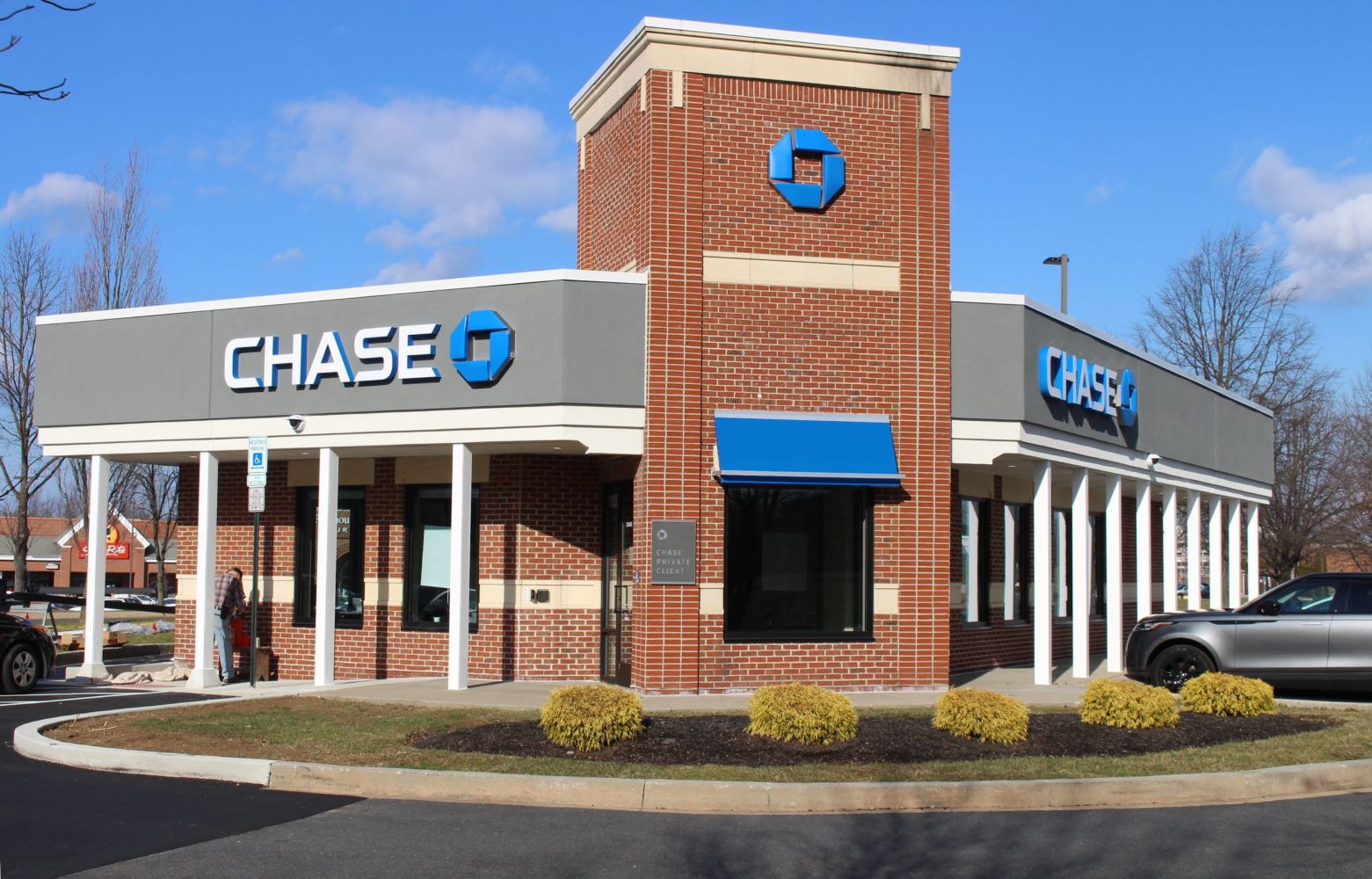
Chase Bank, officially known as JPMorgan Chase Bank, N.A., stands as one of the largest and most influential banks in the United States. Founded in 1799 by Aaron Burr, it began as The Manhattan Company, initially created to provide clean water to New York City. Over the years, Chase has grown through numerous mergers and acquisitions, including significant mergers with Chase National Bank in 1955, Chemical Bank in 1996, and Bank One Corporation in 2004. Today, Chase operates over 5,100 branches and 17,000 ATMs nationwide, serving almost half of America's households. With a global presence in over 100 countries, Chase continues to offer a wide range of financial services, from checking accounts to investment advice.
The Origins of Chase Bank
Chase Bank, officially known as JPMorgan Chase Bank, N.A., has a rich history that spans over two centuries. Let's dive into some fascinating facts about its origins and early days.
-
Founding: The Bank of The Manhattan Company was founded on September 1, 1799, by Aaron Burr. It was initially established to provide clean water to New York City but served as a front for creating New York's second bank, rivaling Alexander Hamilton's Bank of New York.
-
Name Origin: The bank was named after The Manhattan Company, which was founded by Aaron Burr. The name "Chase" comes from the Chase National Bank, which merged with The Manhattan Company in 1955.
-
Chase National Bank: Founded in 1877 by John Thompson, it was named after former United States Treasury Secretary and Chief Justice Salmon P. Chase, although he had no direct connection with the bank.
-
Rockefeller Connections: Chase has long-standing connections with the Rockefeller family, particularly through its association with Standard Oil and ExxonMobil. John D. Rockefeller Jr. was a significant stockholder in the Equitable Trust Company of New York.
Mergers and Acquisitions
Chase Bank's growth over the years can be attributed to several significant mergers and acquisitions. These strategic moves have helped it become a financial powerhouse.
-
1955 Merger: The Chase Manhattan Bank was formed by the merger of The Manhattan Company and Chase National Bank.
-
1996 Merger: Chase Manhattan Bank merged with Chemical Bank New York, further expanding its reach and services.
-
2004 Merger: Chase Manhattan Bank merged with Bank One Corporation, bringing in new resources and capabilities.
-
2008 Acquisition: Chase acquired the deposits and most assets of Washington Mutual, solidifying its position as a major player in the banking industry.
-
Recent Acquisitions: In May 2023, Chase acquired the assets of First Republic Bank, expanding its reach and customer base.
Chase Bank Today
Chase Bank operates as a subsidiary of JPMorgan Chase & Co., one of the largest multinational banking and financial services holding companies in the world. Here are some key facts about its current structure and operations.
-
Headquarters: Chase is headquartered in New York City, with its main office located at 270 Park Avenue.
-
Branches and ATMs: As of 2023, Chase operates over 5,100 branches and 17,000 ATMs nationwide, providing extensive financial services to millions of customers.
-
Employees: JPMorgan Chase & Co., which includes Chase, employs approximately 250,355 people as of 2016.
-
Assets: The bank had total assets of $3.31 trillion in 2022, making it the largest bank in the United States and the only bank with a presence in all contiguous states.
-
Revenue: In 2022, Chase generated revenue of $124.54 billion.
-
Key People: Jamie Dimon serves as the Chairman and CEO of JPMorgan Chase & Co., overseeing the operations of Chase Bank.
Products and Services
Chase Bank offers a wide range of financial products and services to meet the diverse needs of its customers. Here are some of the key offerings.
-
Checking Accounts: Chase offers various checking accounts, including Chase Total Checking, Chase College Checking℠, and Chase Private Client Checking℠.
-
Savings Accounts: Customers can choose from several savings account options, each designed to help them reach their financial goals.
-
Credit Cards: Chase provides a variety of credit cards, including rewards cards, travel cards, and business cards.
-
Mortgages: The bank offers mortgage services to help customers purchase homes or refinance existing mortgages.
-
Auto Financing: Chase provides auto loans and financing options for customers looking to buy new or used vehicles.
-
Investment Advice: Customers can access investment advice and services through Chase's financial advisors.
Customer Base and Global Presence
Chase Bank serves a vast and diverse customer base, both in the United States and around the world. Here are some interesting facts about its reach and influence.
-
Customer Base: Chase serves almost half of America's households, making it one of the most widely used banks in the country.
-
Global Presence: With operations in over 100 countries, Chase is a global banking entity.
-
Retail Banking Division Acquisition: In 2006, Chase acquired the retail banking division of the Bank of New York, which later merged with Mellon Financial to form BNY Mellon.
-
Chase Private Client Checking℠: A premium checking account with a $35 monthly service fee unless waived. Offers up to $3,000 cash bonus, no foreign exchange rate adjustment fees, and unlimited out-of-network ATM fee refunds.
-
Chase College Checking℠: Designed for students aged 17-24. Offers no monthly service fee while in school, a $100 bonus for new customers, and access to over 4,700 branches.
-
Chase Total Checking: Features a $12 monthly service fee. Offers no required opening deposit and a $300 bonus for new customers.
Digital and Technological Innovations
Chase Bank has embraced digital banking and technological innovations to provide convenient and secure services to its customers.
-
ATM Network: Chase has access to over 15,000 ATMs nationwide, providing customers with extensive ATM services.
-
Digital Banking: Chase offers mobile banking services through its Chase Mobile app, allowing customers to manage their accounts securely and conveniently from anywhere.
-
Zelle Integration: Chase supports Zelle, enabling customers to send and receive money from almost anyone with a bank account in the U.S.
-
Fraud Monitoring and Zero Liability Protection: Chase provides fraud monitoring and zero liability protection for unauthorized debit card purchases when reported promptly.
Customer Service and Community Involvement
Chase Bank is committed to providing excellent customer service and supporting the communities it serves.
-
Customer Service: Chase offers various customer service options including phone support, online chat, and in-person assistance at its branches.
-
Financial Education: The bank provides financial education resources to help customers manage their finances effectively.
-
Credit Score Access: Chase offers free credit score access to its customers, helping them monitor their credit health.
-
Community Involvement: Chase is involved in various community initiatives, supporting local businesses and charitable causes.
Historical Advertising Campaigns
Chase Bank has used creative advertising campaigns to connect with customers and promote its services over the years.
-
"Nest Egg" Campaign: Featured people trying to relax or have fun while shackled to giant eggs, symbolizing their savings.
-
"You Have a Friend at Chase Manhattan" Campaign: Personalized the banking experience globally, emphasizing that Chase is there for customers no matter where they are in the world.
-
Chemical Bank Campaigns: Targeted a specific audience with its 1965 campaign featuring a New York woman, emphasizing that when her financial needs arise, her reaction is "chemical," referring to the bank.
-
Manufacturer's Hanover Auto Loan Campaigns: The "Sponge on Wheels" advertisements highlighted how old, unreliable cars soak up money in repairs and gasoline. The "Any Car" campaign was a success, bringing in thousands of new loans for the bank.
Innovation and Preservation
Chase Bank has a history of innovation and a commitment to preserving its legacy.
-
Home Computer Banking Program: In 1971, Manufacturer's Hanover launched an early home computer banking program called Channel 2000.
-
Preserving History: JPMorgan Chase has a dedicated corporate history program responsible for preserving over 1,200 predecessor institutions' documents, photos, and artifacts. This collection helps understand the bank's legacy and business history.
-
Legacy of Mergers: The firm today is built on the legacy of many bank mergers and acquisitions over the years, forming today's JPMorgan Chase & Co.
-
Advertising Evolution: Early advertisements took the form of newspaper notices and text-heavy magazine ads. The 1950s and '60s saw a heyday of bank advertising with more creative content targeting a broader demographic.
-
Customer-Friendly Approach: JPMorgan Chase's predecessor banks used advertising to change consumers' perceptions of banks from impersonal institutions to customer-friendly financial firms providing services to make their lives easier and better.
-
Iconic Campaigns: The "Nest Egg" and "You Have a Friend at Chase Manhattan" campaigns are iconic examples of how JPMorgan Chase used advertising to personalize the banking experience and emphasize global support.
-
Targeted Marketing: Chemical Bank's 1965 campaign was one of the first to market directly to women, targeting them as they entered the workforce in greater numbers and gained more economic power.
-
Auto-Focused Campaigns: Manufacturer's Hanover's auto loan campaigns were successful in attracting new customers by highlighting the benefits of new, efficient cars over old unreliable ones.
-
Home Computer Banking: The early home computer banking program, Channel 2000, was launched by Manufacturer's Hanover in 1971, showcasing the bank's innovation in technology.
-
Preservation Efforts: JPMorgan Chase's corporate history program is dedicated to preserving documents, photos, and artifacts related to its predecessor institutions. This effort ensures that the bank's history is preserved for future generations.
-
Legacy Collection: The collection includes everything from documents to photos and artifacts, providing valuable insights into the bank's past and present operations.
Chase Bank: A Legacy of Innovation and Growth
Chase Bank's journey from its founding in 1799 to becoming a financial giant is nothing short of remarkable. With over 5,100 branches and 17,000 ATMs, Chase serves nearly half of America's households. Its mergers with institutions like Chemical Bank and Washington Mutual have solidified its position as a banking powerhouse. The bank's commitment to innovation is evident in its digital banking services and early adoption of home computer banking. Chase's extensive product range, from checking accounts to investment advice, caters to diverse customer needs. The bank's global presence in over 100 countries underscores its influence and reach. With a focus on customer service, financial education, and community involvement, Chase continues to lead in the banking industry. Its rich history, marked by strategic acquisitions and a dedication to preserving its legacy, ensures Chase remains a trusted name in finance.
Was this page helpful?
Our commitment to delivering trustworthy and engaging content is at the heart of what we do. Each fact on our site is contributed by real users like you, bringing a wealth of diverse insights and information. To ensure the highest standards of accuracy and reliability, our dedicated editors meticulously review each submission. This process guarantees that the facts we share are not only fascinating but also credible. Trust in our commitment to quality and authenticity as you explore and learn with us.


